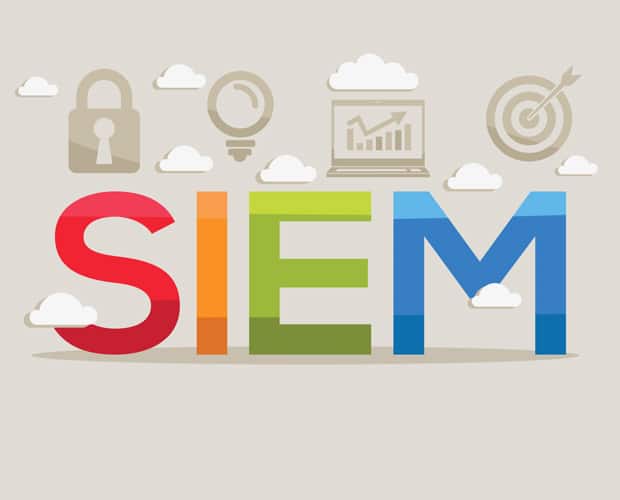Is SIEM right for your organization? In the world of cybersecurity, staying ahead of potential threats is a constant challenge. One of the tools that organizations use to manage this challenge is a Security Information and Event Management (SIEM) system.
In my travels, it is somewhat unusual to see an organization using Security Information and Event Management; however, as time goes on, more and more compliant organizations will look to this solution for managing threats in real-time to ensure timely response to any identified issues.
This article outlines what a SIEM is, when it should be used, and why it is – or will be crucial – for maintaining robust security in today’s digital environment.

What is a SIEM?
A Security Information and Event Management system is a comprehensive solution that provides real-time analysis of security alerts generated by applications and network hardware. SIEM combines two major functions: Security Information Management (SIM) and Security Event Management (SEM). Together, these functions provide a holistic view of an organization’s information security posture.
Key Components of SIEM:
- Data Collection: These systems gather log and event data from various sources across an organization’s IT infrastructure, including network devices, servers, databases, and applications.
- Data Aggregation: This collected data is aggregated and normalized to ensure it is in a consistent format for analysis.
- Correlation: These systems correlate data from different sources to identify patterns that may indicate a security threat.
- Alerting: When a potential security incident is detected, the SIEM system generates alerts for the security team to investigate.
- Dashboards and Reporting: They provide dashboards and reports that give insights into security events and trends over time.
When to Use Security Information and Event Management
1. Real-Time Threat Detection:
- Continuous Monitoring: Organizations that require continuous monitoring of their IT infrastructure for potential threats will benefit from a SIEM. This is particularly crucial for large enterprises with complex networks.
- Immediate Alerts: These systems provide real-time alerts, allowing security teams to respond swiftly to incidents, potentially mitigating the impact of a breach.
2. Regulatory Compliance:
- Data Retention: Many regulations, such as GDPR, HIPAA, and PCI-DSS, require organizations to retainlogs and monitor access to sensitive data. SIEM systems help meet these compliance requirements by storing logs in a secure and tamper-evident manner.
- Audit Trails: Security Information and Event Management generates comprehensive audit trails that are essential for regulatory audits and investigations.
3. Incident Response:
- Forensic Analysis: In the event of a security incident, Security Information and Event Management provides the necessary data for forensic analysis to determine the cause and scope of the breach.
- Automated Response: Advanced SIEM systems can integrate with other security tools to automate responses to specific types of threats, reducing the time to containment and resolution.
4. Security Operations Center (SOC) Support:
- Centralized Monitoring: Organizations with a Security Operations Center (SOC) use SIEM to centralize security monitoring and incident management. This ensures that all security events are visible to the SOC team, enhancing their ability to detect and respond to threats.
- Collaborative Investigations: They facilitate collaboration among SOC analysts by providing a unified platform for investigating and resolving incidents.
Why SIEM is Important
1. Improved Threat Detection and Response:
- Proactive Defense: Security Information and Event Management systems enable organizations to move from a reactive to a proactive security stance by identifying potential threats before they can cause significant harm.
- Enhanced Visibility: Organizations gain comprehensive visibility into their IT environment, making it easier to spot anomalies and potential threats.
2. Comprehensive Compliance Management:
- Simplified Auditing: They streamline the process of demonstrating compliance with regulatory requirements, reducing the administrative burden on security teams.
- Risk Management: By providing insights into security events and trends, Security Information and Event Management systems help organizations manage and mitigate risk more effectively.
3. Cost Efficiency:
- Resource Optimization: SIEM systems can reduce the need for manual log analysis and incident investigation, freeing up security personnel to focus on more strategic tasks.
- Preventive Measures: By detecting and responding to threats early, SIEMs can help prevent costly data breaches and downtime.
4. Scalability and Flexibility:
- Adaptable Solutions: Modern SIEM solutions can scale with the growth of an organization and adapt to changing security needs, ensuring continuous protection.
A SIEM system is an essential tool for organizations looking to enhance their cybersecurity posture or meet a compliance requirement. By providing real-time threat detection, supporting regulatory compliance, aiding incident response, and improving overall security operations, SIEMs help protect businesses from the growing array of cyber threats. Implementing a Security Information and Event Management system can significantly improve an organization’s ability to detect, respond to, and recover from security incidents, making it a critical component of modern cybersecurity strategies.

Chris Montgomery
ThrottleNet Sales Director
cmontgomery@throttlenet.com



